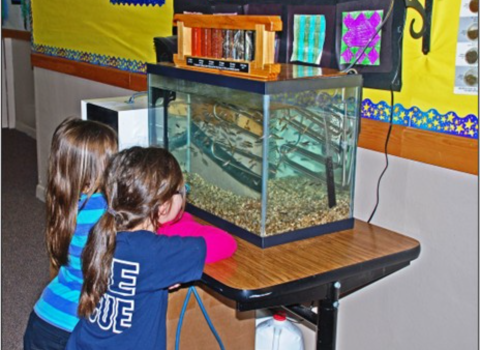Preparation of Primary Myogenic Precursor Cell/Myoblast Cultures from Basal Vertebrate Lineages by: Jacob Michael Froehlich, Iban Seiliez, Jean-Charles Gabillard, Peggy R. Biga Department of Biology, University of Alabama at Birmingham
Full Abstract:
Due to the inherent difficulty and time involved with studying the myogenic program in vivo, primary culture systems derived from the resident adult stem cells of skeletal muscle, the myogenic precursor cells (MPCs), have proven indispensable to our understanding of mammalian skeletal muscle development and growth. Particularly among the basal taxa of Vertebrata, however, data are limited describing the molecular mechanisms controlling the self-renewal, proliferation, and differentiation of MPCs. Of particular interest are potential mechanisms that underlie the ability of basal vertebrates to undergo considerable post larval skeletal myofiber hyperplasia (i.e. teleost fish) and full regeneration following appendage loss (i.e. urodele amphibians). Additionally, the use of cultured myoblasts could aid in the understanding of regeneration and the recapitulation of the myogenic program and the differences between them. To this end, we describe in detail a robust and efficient protocol (and variations therein) for isolating and maintaining MPCs and their progeny, myoblasts and immature myotubes, in cell culture as a platform for understanding the evolution of the myogenic program, beginning with the more basal vertebrates. Capitalizing on the model organism status of the zebrafish (Danio rerio), we report on the application of this protocol to small fishes of the cyprinid clade Danioninae. In tandem, this protocol can be utilized to realize a broader comparative approach by isolating MPCs from the Mexican axolotl (Ambystomamexicanum) and even laboratory rodents. This protocol is now widely used in studying myogenesis in several fish species, including rainbow trout, salmon, and sea bream.
Introduction
This research is being used to provide "understanding whether MPC cell fate choice plays a role in skeletal muscle hyperplasia versus hypertrophy"
Outside of the class Mammalia, however, the conservation and/or divergence of mechanisms controlling myogenesis are poorly understood, largely due to the difficulty in culturing myogenic precursor cells (MPCs) and myoblasts from various taxa. Indeed, primary myoblast cultures have only been described in three birds, one reptile, a few amphibians, and some fishes. Continuous myogenic cell lines from vertebrates other than rodents are even more rare, with the only non-mammalian myogenic cell line being derived from Japanese quail (Cortunix japonica). Despite many attempts at immortalization, a teleost myogenic cell line remains elusive and a protocol for efficient transfection of these cells was only published this year. Thus, clear and well-optimized protocols for culturing primary MPCs and myoblasts from a variety of vertebrates are very much needed to not only further expand our knowledge of the evolution of the myogenic program, but to employ the power of comparative physiology to make breakthroughs in the treatment of human skeletal muscle diseases and disorders.
Protocol
Dale Hollow NFH is able to provide any size of juvenile trout for UAB research, but they consistently request 2.5-3” fingerlings.
The age of the fish to be used is of critical importance. While fish of two different species may be of similar weights, a younger fish of one species will possess more MPCs than an older fish of another species. As a general rule, younger fish, especially when working with salmonids, are best.
Description of a blender as an electric tissue homogenizer:
Poor dissociation will hinder enzymatic digestion and decrease cell yield. Although it may be tempting to consider, the use of electric tissue homogenizers dramatically lowers cell viability despite its obvious convenience, at least with piscine MPCs.
Results
Average number of myogenic precursor cells isolated from 1 gram of muscle tissue from teleost species: Oncorhynchus mykiss (rainbow trout).
Oncorhynchus mykiss | 66,800 |
Discussion
The myogenic program, in whichever species examined, can be most easily studied through an in vitro system. Indeed, upon isolation, myogenic precursor cells (MPCs) in fish or myosatellite cells (MSCs) in mammals readily enter this highly regulated process involving the proliferation, cell cycle withdrawal, and terminal differentiation of myoblasts and the fusion of those myoblasts into nascent myotubes. The general lack of transgenic gene reporter strains of piscine species (with the possible exception of the zebrafish and rainbow trout) constrains in vivo work of MPC/MSC activation, proliferation, and differentiation, and thus the in vitro system presented here is an attractive platform for studies in fish species.



